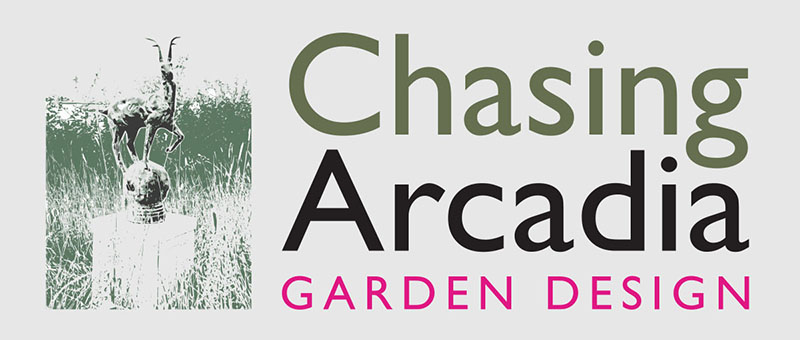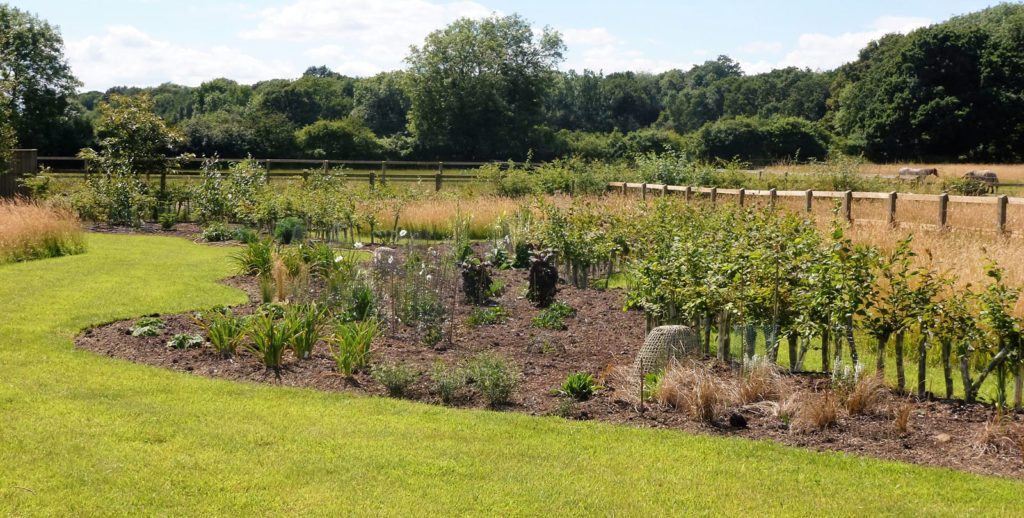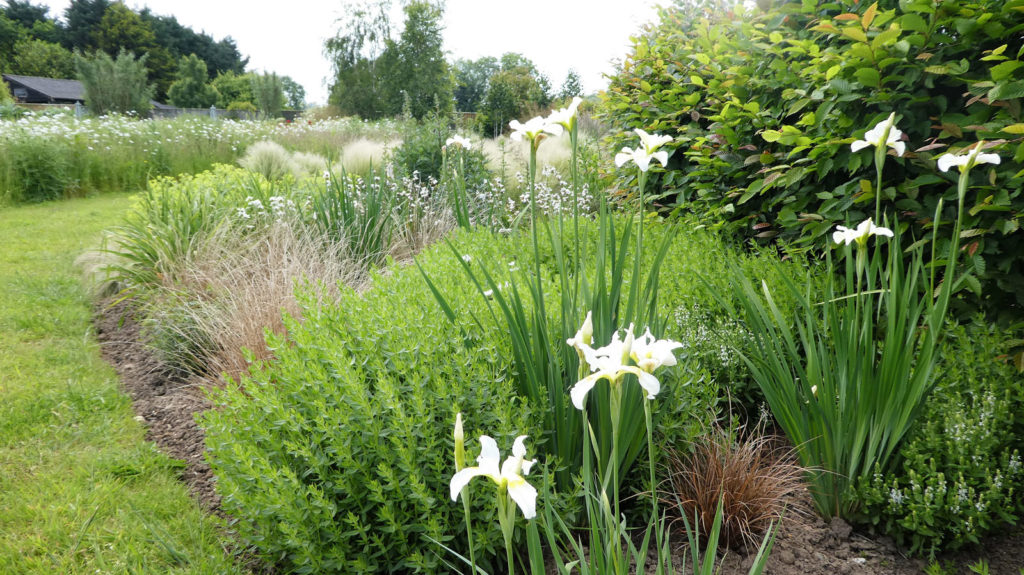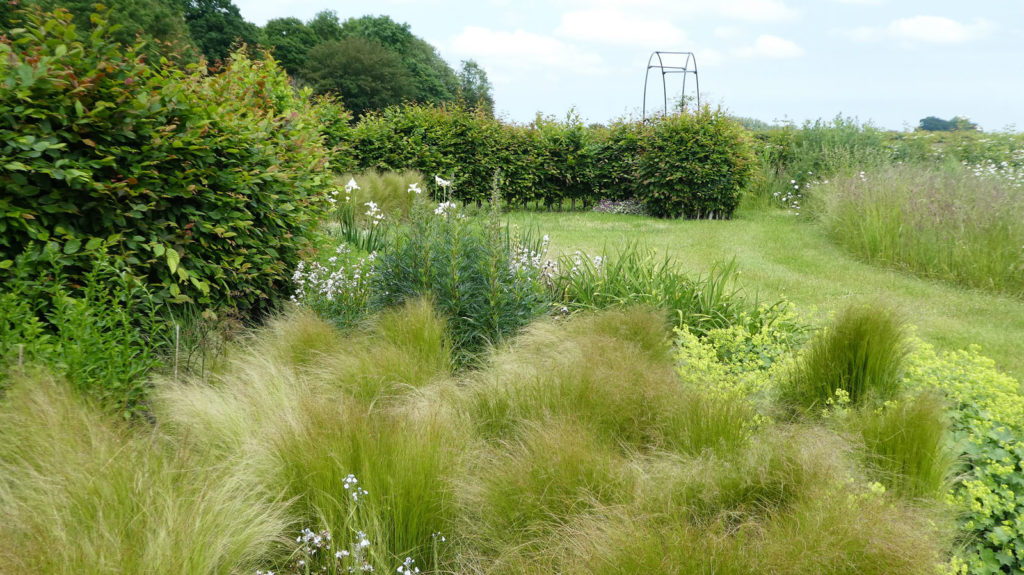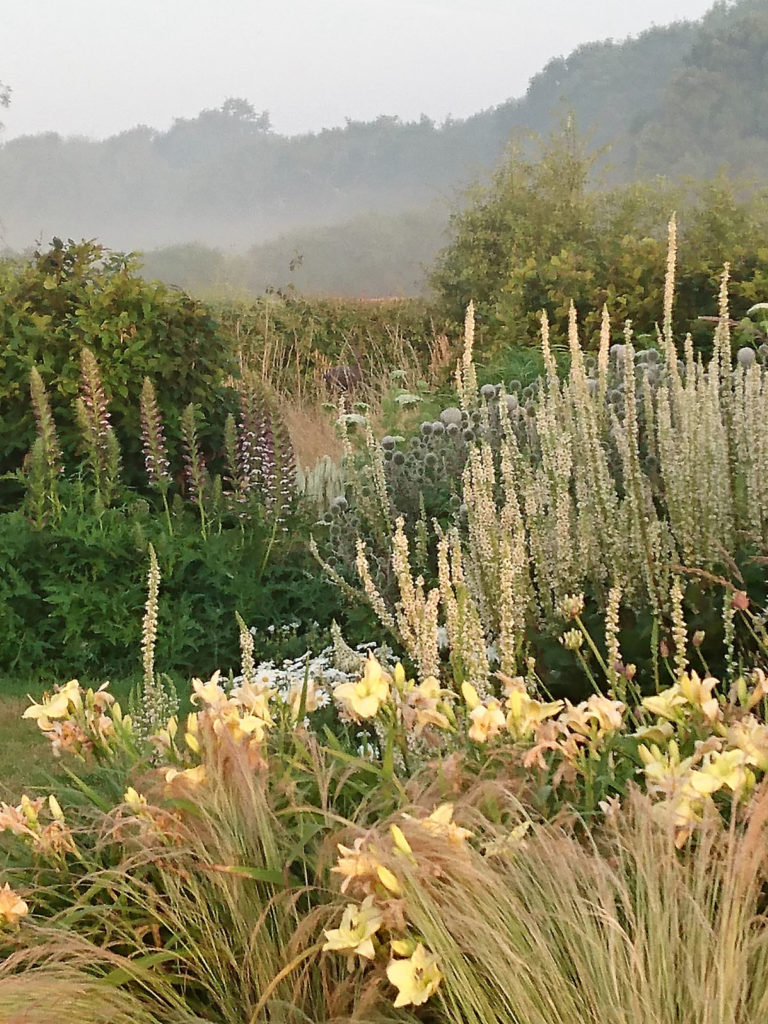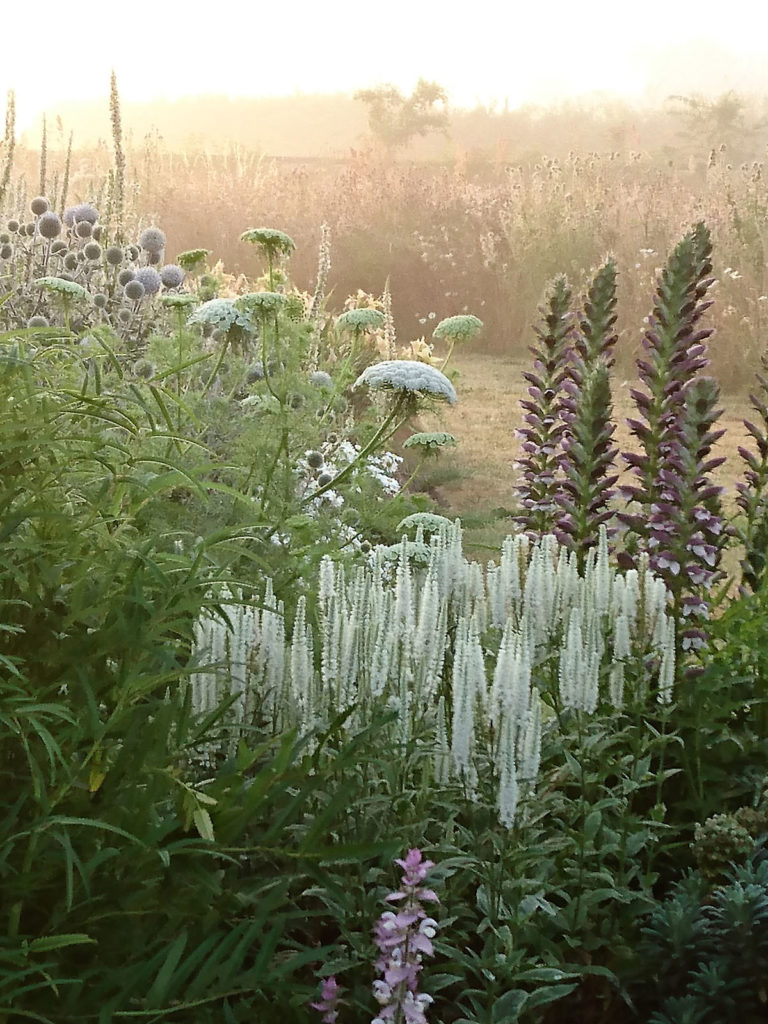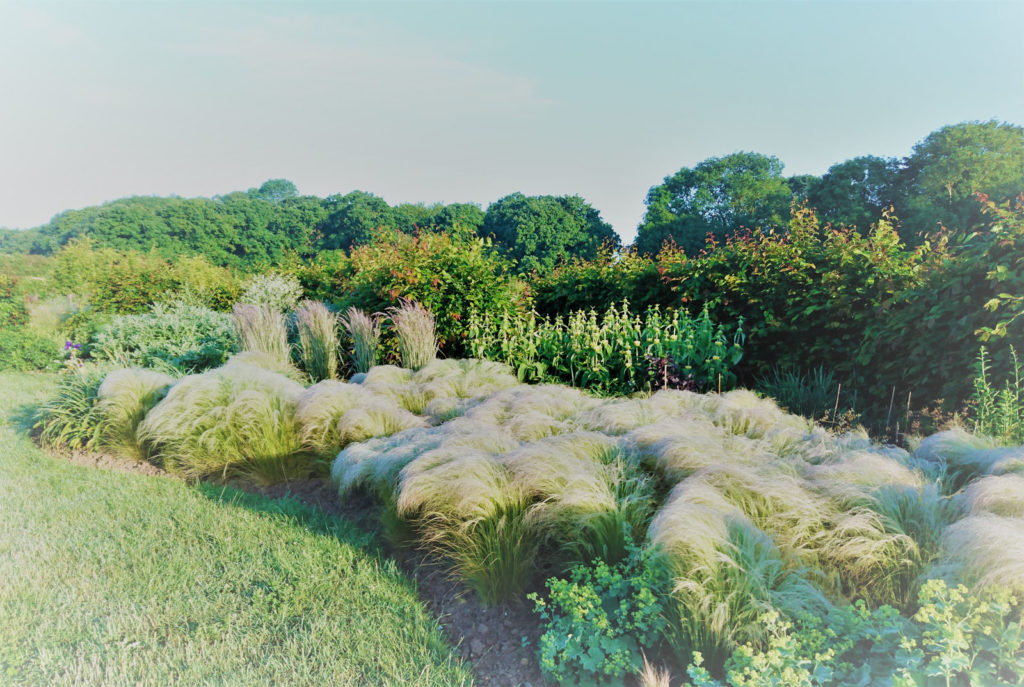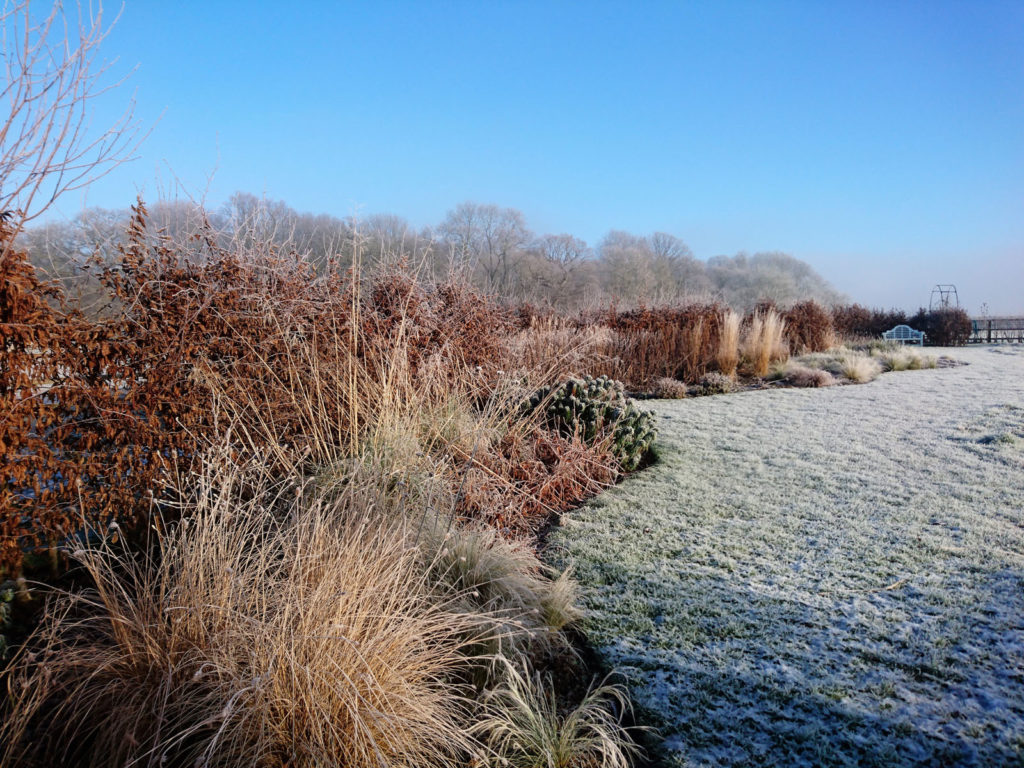This is my favourite border design, which continues to evolve and develop as it goes into its fourth year. I was inspired by the undulating outlines of mature oaks in a stretch of ancient woodland, and a nearby wildflower meadow. This beautiful landscape also offered the perfect opportunity to use the East Asian concept of ‘shakkei’ or ‘borrowed scenery’.
The border plan is based on a serpentine in both horizontal and vertical planes. A cloud pruned hornbeam hedge provides structure at the back, echoing the woodland beyond, on a serpentine ground plane. The border is around thirty metres long and between two and five metres wide.
I always try to include an element of surprise in my designs, so although the hedge appears continuous from the front, in fact it is broken at two points. Walking along the front of the border, at certain points the breaks come into view, with sculptures in the gaps and the wider landscape in the distance.
The planting was designed to reflect the wildflower meadow directly opposite the new border, with a mainly white palette, albeit bolder and more architectural than a ‘natural’ planting scheme. The planting graduates in height and bulk from one end of the border to the other, where the dwindling of the planting is offset by the bulk of a clipped hornbeam sphere, literally making a full stop to the sinuous lines of the border.
At the ‘tall’ end, Stipa gigantea is combined with Euphorbia characias subsp. Wulfenii and Acanthus hungaricus. Further along Salvia turkestanica, Echinops sphaerocephalus ‘Arctic Glow’ and Verbascum chaixii ‘Album’ make another very striking and long-lasting combination.
Calamagrostis acutiflora ‘Overdam’, various Miscanthus and Stipa tenuissima provide movement in the middle of the border, offset by Gaura lindheimeri, Allium roseum and Alchemilla mollis. In high summer the dark foliage of dahlia ‘Twyning’s After Eight contrasts with the airiness of the grasses. Crambe cordifolia, various leucanthemums, hemerocallis, Libertia grandiflora and agapanthus all add their seasonal contribution to the mix.
A heavy mulch of mushroom compost on the new border proved a perfect medium for many of the plants to self-seed, some more successfully than others. There are certainly more Salvia turkestanica, Verbascum and Echinops than in the original plan, and several more Euphorbias, which has worked well .
Such unplanned evolution is all in the spirit of taking inspiration from the wildflower meadow. However, I regretted taking the idea a step further by allowing Leucanthemum vulgare to seed into the border. Soon it was taking over and crowding out the other border plants, and had to be weeded out.
Although only in its fourth season, and with the hornbeam hedge still to bulk out and reach a really sculptural form, the border is looking amazing, and I’m especially pleased with the planting choices.
Contact me if you’d like to create your own piece of border magic
